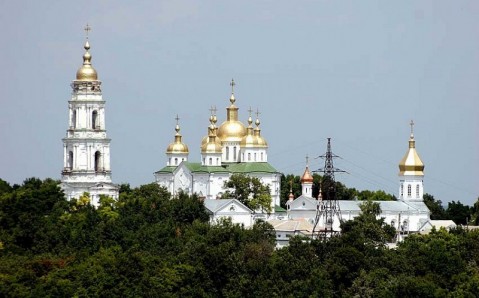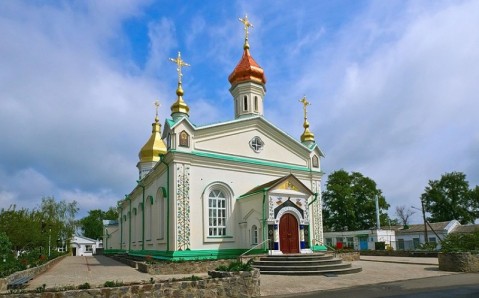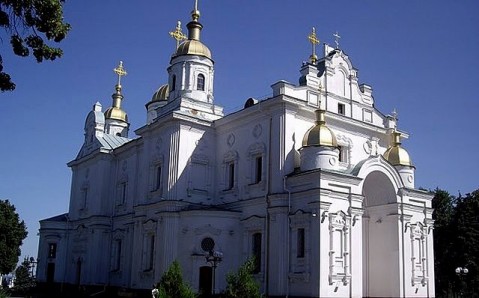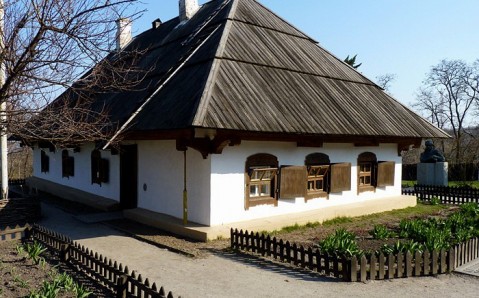The Exaltation of the Cross Monastery
Built in 1650 on the hill near Vorskla River, the Exaltation of the Cross Monastery is considered to be one of the best samples of Ukrainian baroque architecture and one of Poltava's most interesting sights. However, it's not just a valuable architectural monument - many important historical events are connected with the cloister.
In the late 17th century, the monastery was captured and ransacked by Crimean Tatars, before it mushroomed. In the year 1709 - during the famous Battle of Poltava - it was occupied and ravaged by Swedish troops. Having occupied the territory of the Exaltation of the Cross Monastery, the Swedes centered fire on city fortress's bastions from here. The headquarters of Swedish King Carl XII was located in the monastic cells.
Being reconstructed after military operations, in the 18th century, the Monastery became one of the most important cultural centers not only of Poltava and of the whole Left-bank Ukraine: in particular, region's biggest library with rare ancient publications was situated here.
At the same time the monastery acquired its main gem - the marvelous Exaltation of the Cross Church, built in pretentious baroque style. Its uniqueness is that it's one of the few seven-domed churches that survived on the territory of Ukraine until now. The Cathedral's special decoration is three layers of windows with intricate cases. Besides that the Exaltation of the Cross Church was notable for its unusually beautiful interior - its main riches were amazing iconostases that were unfortunately destroyed during Soviet times and didn't survive until now.
Somewhat later the architectural complex of the church was supplemented by the stone Trinity Church that was considered to be refectory church and by the Semenovsky Church. Monastic complex's most attractive building, however, was four-layer bell tower in the late baroque style, adjoined to the Exaltation of the Cross Cathedral in 1786. The belfry was 47-meter high and had over ten different bells, the largest of which weighed over 6,5 tons. Besides these cultic buildings, there were dean's house, brotherhood cells' premises and guest house on the territory of the monastery.
The Exaltation of the Cross Monastery was always famous for incredibly beautiful church utensils, created mainly in the 18th-19th centuries. Richly decorated crosses, lamps and leading clergymen's clothes embroidered with gold and silver stroke at most. Unfortunately, due to Monastery's complicated history, the majority of objects didn't survive.
In the first third of the 20th century the Monastery - along with many other cultic buildings on the territory of Ukraine - was abolished. The Soviet authorities used its premises as imprisonment facilities for juvenile delinquents, and later a boarding school was located here. During the World War II the cloister renewed its work for a short time - as a nunnery, though (it used to be male monastery before). In 1960, it was closed again, and was returned to believers only when Ukraine became independent. Today the Exaltation of the Cross Monastery is under renewal.

 Eastern
Eastern









